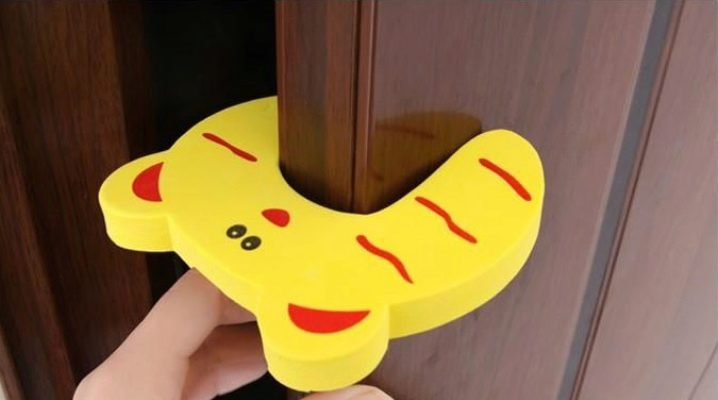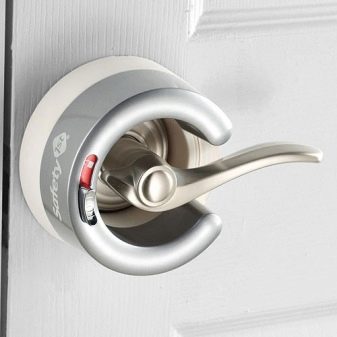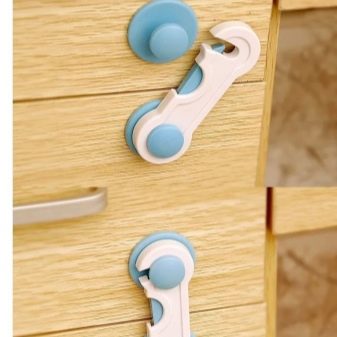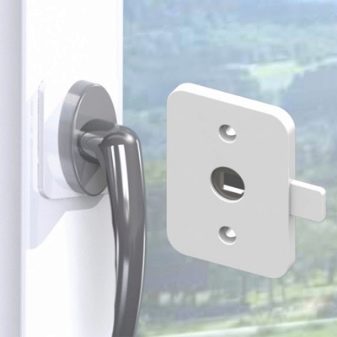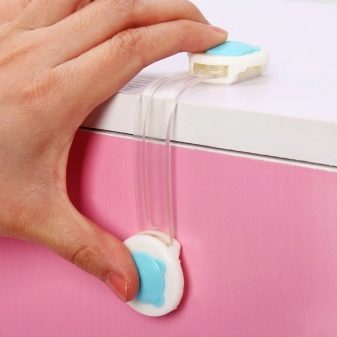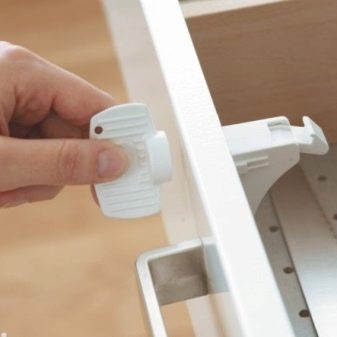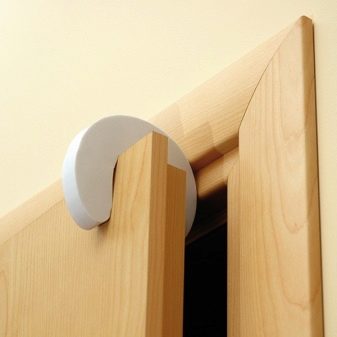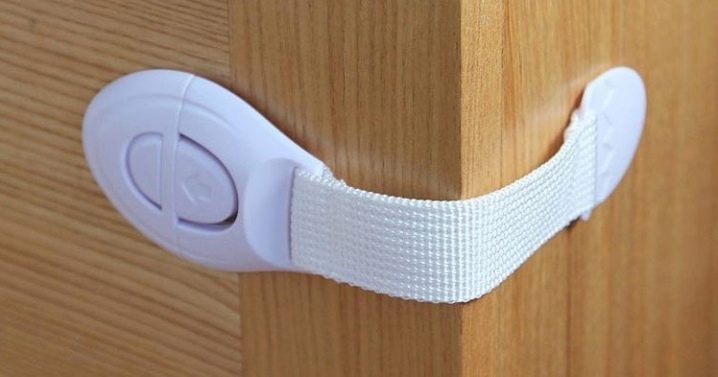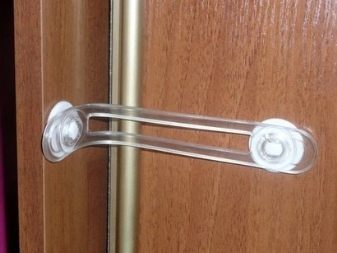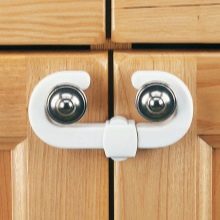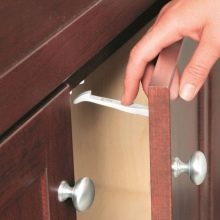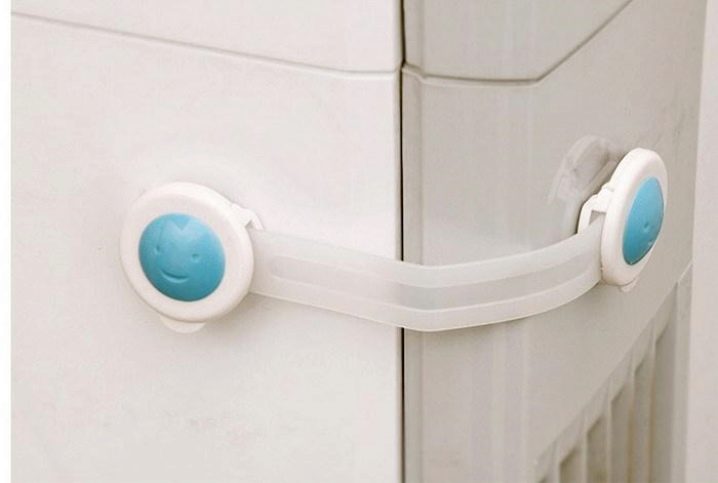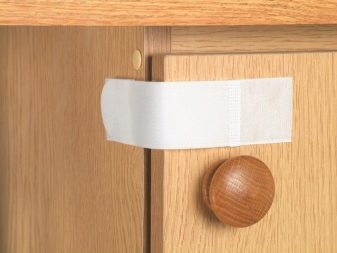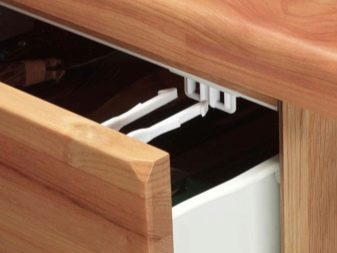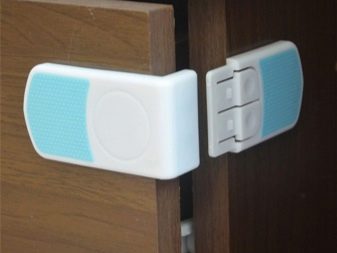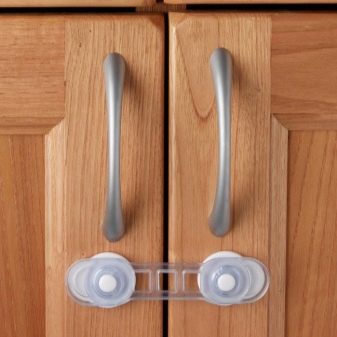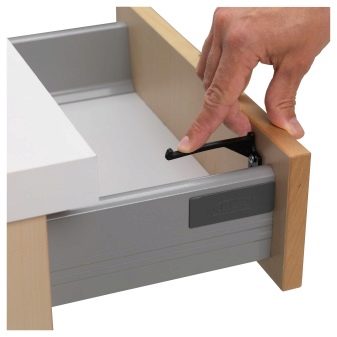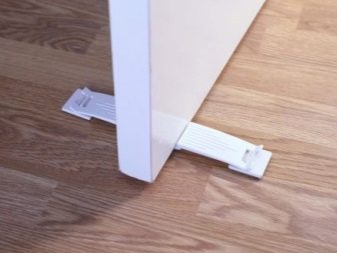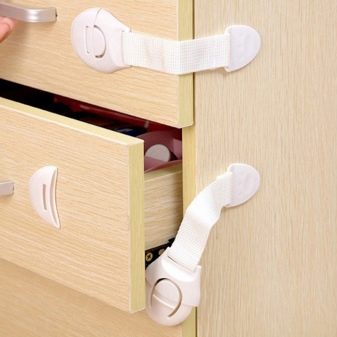Child protection for drawers and cabinets
The apartment for a small child is a huge interesting world. Having barely begun to take the first steps, every crumb stubbornly seeks to explore this world. And in this informative, active and interesting period for the baby, the parents clutch their heads. Drawers of dressers and bollards, shelves of lockers, storing the usual and usual for an adult person things beckon the baby like a magnet.
But without the skills to handle objects, proper coordination and care, a small child can harm himself by exploring the next corners of our furniture. And having reached the multicolored bottles with creams or toilet water, my mother's cosmetic bag or a box with papa's linen, the child does not always come with these things carefully enough. This is not at all the fault of the child, because he is just beginning to learn everything. And mother, once again taking a deep breath, begins to clean up the consequences of the adventures of an inquisitive baby.
Any mother tries to be with the child all the time, accompanying his first steps in this world, but, unfortunately, no other things will be undone by other household chores, even minute ones. A mother who has been away from stirring the boiling porridge in the kitchen, sometimes with horror he hears from the next room the rumble of falling objects or the crying of a baby. The anxiety of parents at such moments is fully justified. In this article, we will introduce precautions and ways to protect drawers and cabinets from small children.
Protective mechanisms
The simplest devices for locking the doors of lockers and pedestals can be made by hand. Our mothers and grandmothers used these simple methods with the use of available tools. Two adjacent door handles can be tied with a strong thick thread, rope or elastic.
The disadvantage of this method is that the baby may well eventually master the method of getting rid of such a “lock” and with its handles open yourself access to the hidden depths of the furniture shelves. In addition, it is inconvenient for adults themselves, because the rope or gum will have to be removed every time you need to take something from the cabinet, and then fix it again on the handle.
Drawers or doors of the wardrobe can be locked by sticking a strip of wide adhesive tape or insulating tape on their sliding surface. The disadvantages of this method are the same as above. In addition, the adhesive tape will leave difficult to remove sticky marks on the surfaces of furniture. It is possible to curtain a dresser or a curbstone with a large veil or tablecloth.
The child, most likely, will see only a solid piece of matter and will head towards more interesting things. This method is suitable only for very small and insensible children. It can be used as a temporary measure before the more rapid installation of more reliable protective locking devices.
You should not fasten a tablecloth or blanket on top, putting a heavy object on it. An active inquisitive baby can pull over the edge of the cover and drop the load on itself.
Sometimes the doors or drawers of furniture are equipped with dead locks. Basically, such locks are often found in old furniture. In this case, you only need to find the key and do not forget to close the lock on the furniture after each use. Keep the keys to cabinets and shelves as well out of the reach of a small child.And of course, it’s very undesirable to forget the storage place yourself or to lose the coveted key. In this case, take the necessary items from the bedside tables and chest of drawers will not be beyond the power of an adult. However, modern furniture manufacturers do not often cut locks into drawers and doors.
If there is an opportunity, it is better to take care of such furniture in advance by selecting the appropriate model or making it by special order. Embedding such locks in the existing furniture is not entirely appropriate. The difficulty is the selection of the castle itself.
The appearance of the furniture can deteriorate significantly, and the subsequent dismantling of the lock will permanently damage the surface of the door.
Popular manufacturers
To help parents actively seek modern furniture manufacturers. Even with a relatively small budget, it is quite possible to pick up modern, convenient and reliable devices for protecting cabinets - special blockers, plugs, latches, locks, door latches, and velcro. These convenient and necessary protective mechanisms can be bought in children's stores, as well as in stores of furniture or household goods. Similar devices are widely represented in specialized online stores, on manufacturers' websites.
All of them are easily attached to furniture and just as easily, without traces and damage to surfaces, are removed when they no longer need.
The most popular manufacturers of protective and locking devices for furniture:
- "World of Childhood" (Russia);
- Bebe Confort (France);
- Chicco, Poupy (Italy);
- Mothercare (UK);
- Safety First (Netherlands);
- Baby Dan (Denmark);
- Canpol (Poland);
- Ikea (Sweden).
Types and models of blockers
Locks are designed for swinging doors and doors. Depending on the type of handles on the doors, they are of different shapes. Such locks very easily and quickly installed on the cabinet handles, securely hold the sash in the closed position. Clamps on the doors of this type look neat and will not spoil your furniture. They are not torn and do not stretch with repeated opening and closing, quite strong and durable.
For sliding doors and drawers in a dresser or cabinet will fit soft velcro blockers. They are attached to the side and front surfaces of the furniture and are connected with a special fastener, thereby keeping the drawer from being pulled out. Depending on the model, the locking mechanisms may be different: special hidden buttons, hooks, ears.Locks of this type can also be used to lock the doors of kitchen household appliances that are dangerous for the kid (refrigerator, microwave oven, oven). After all, the kid is unlikely to limit his travels to the living room and his children's room.
When the need for such a blocker disappears, it can be easily and safely removed from the surface.
To protect the child from falling heavy box on his feet, you can attach special extension locking latch. If even the young fidget somehow cope with the lock that locks the drawer, the latch will work when it is extended and will not allow the drawer to be pulled out of the drawer too far. Such devices are mounted on the inside of the furniture, blocking the progress of the drawer to a certain amplitude. Fastening is done either with the help of bolts or with the help of glueing to the inner surface of the drawer
More expensive models of bollards and security devices are often equipped with a special built-in sensor that beeps when attempting to open it improperly (pulling the handle with the lock closed or force acting on the mechanism).The intensity and type of sound signal can be adjusted by settings. For vigilant parents, this is undoubtedly a significant advantage.
If the crumb is too actively trying to get into the forbidden spaces of the closet or cabinet, the signal will alert the adult. It will be possible to distract the little one from this occupation and prevent possible troubles.
Is it necessary?
Many parents were convinced of the convenience and safety of using locking devices for sashes and furniture drawers. When there is a little researcher in the house, you should not save on security measures. Moreover, manufacturers provide a very wide range of locks and locks for the doors of cabinets and drawers.
Besides the fact that such devices and mechanisms protect the baby from injury and dangerassociated with heavy or sharp objects, chemicals from the shelves of cabinets, they are also save parents from forced cleaning. Exploring the space of the chest or drawer, the kid often leaves behind a decent mess.
To put things in order and do the cleaning of parents of particularly active and curious crumbs accounted for several times a day.Before Mom has time to decompose the clothes thrown out of the box, from the next room one can already hear the sound of tubes of cream falling to the floor and bottles of toilet water, or even the sound of a broken cup.
Scolding a baby for a natural interest in the environment is almost the same as scolding a person for wanting to sleep or eat. The development of intelligence and physical functions is inseparably linked with the practical study of the world. The crumb actively moves, examines, touches objects, drags them into the mouth. He does not do this out of deliberate mischief, and not from the desire to deliberately annoy you. Remember this. Do not limit the child in his natural development, making scandals and scolding him for carelessness.
Although rare mothers manage to restrain anger and irritation after the next misstep of fidget. The baby does not have the skills of careful handling of objects, but just this and much more, he will learn all the first months and years of his life. It is possible to make this process mutually pleasant, interesting and safe enough for your child only with the safeguarding help of parents.
You, in turn, can significantly ease your hard parental task,turning to the help of modern gadgets. Including devices for protecting and locking cabinets from small children.
An overview of child protection on drawers in action, see below.
